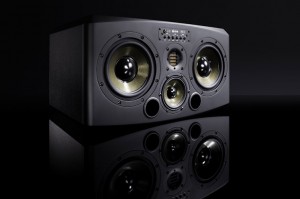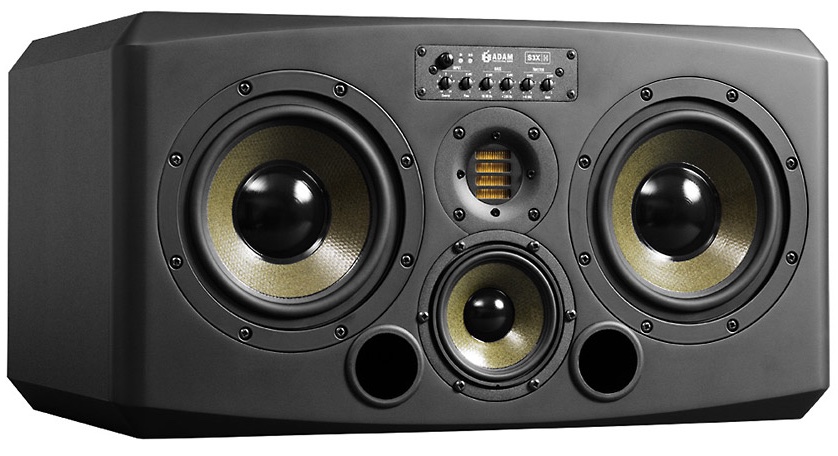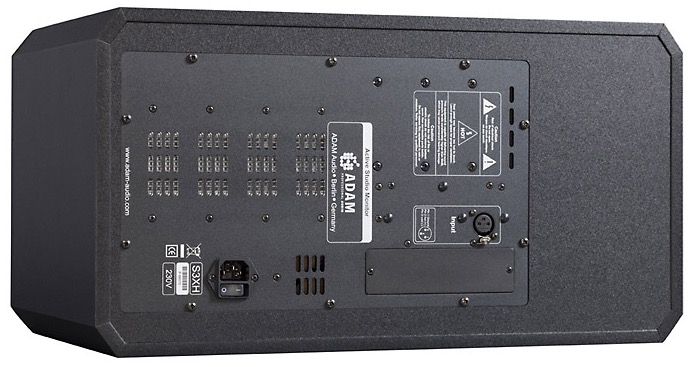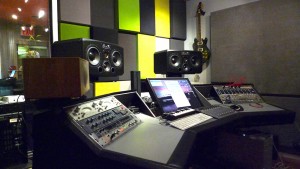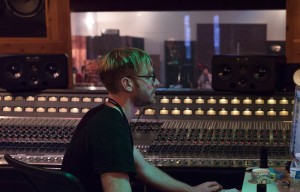New Gear Review: ADAM S3X-H Studio Monitors
I’ll start with the cliché — “you’ll have to pry these out of my dead hands” — first. I love them.
I started using ADAM‘s original S3A monitors shortly after they came out. I remember seeing, or rather hearing them at AES one year, and quickly deciding they were right for me. ADAM had a booth with the S3As setup.
I can’t quite recall the song they were playing, but the top end coming off the ribbon tweeters felt considerably different, more pleasing and smooth than the Genelec 1031s that I had been so accustomed to. I could only attribute the smooth but clear top end to the ribbon tweeter, something I had, at that point, never seen (heard) before. I sold about a few sets of monitors that I owned so I could buy a pair of S3As.
They served me well for a number of years, but in my new space I found I was struggling with low-end issues — mostly due to the size and shape of the space. It’s a small room in the Flatiron District of Manhattan, in the back of Limebeat Studios. This is where the S3X-H has really helped me out.
First Impressions
As soon as I got them into the studio, I put the S3X-Hs and the S3As up side by side, to A/B them, and it turns out that they are completely different sounding speakers. The S3X-Hs had much more low-end — and not just “more”, but more defined as well. I could suddenly hear everything I had been struggling with before.
EQ changes in the bass frequencies of even just a dB or two were now very apparent. In my room at least, I found the S3X-Hs to be significantly more accurate in representing what was actually going on. Comparatively, the older S3As had a lot more going on in the mid-range, and generally sounded a bit “cloudier” to my ear. There was substantially more detail in both the high-end and low-end with the S3X-Hs, the top-end was crisper, and the stereo imaging seemed far wider.
Under the Hood
There are some massive design differences between the S3As and the S3X-Hs. Most obviously is the addition of a 4.5″ cone dedicated for midrange. Upon further inspection of the technical specs for each monitor it becomes clear that they are two completely different animals:
The S3X-Hs boast larger amps, the crossover frequencies are totally different and the two woofers work together handling the low end as opposed to operating as a woofer and a subwoofer as they did in the S3As. An interesting difference is that the frequency response of the S3X-Hs extends an additional 18khz all the way from 32hz to 50khz (the S3As are 32hz to 32khz). Could this have anything to do with the apparent wider image?
In Use
All of these changes have made a real difference in clarity and make the S3X-Hs a far superior monitor. There is so much more detail It reminds me of listening in a mastering studio. In the beginning, I wondered if this was a bad thing, and I worried that hearing tracks sound as beautiful as they did on the S3X-Hs could potentially make me lazier, or less likely to make changes.
Regardless, to continue running the S3X-Hs through their paces I decided to remove the S3As, and just mix on the S3X-Hs. If anything, I think my mixes actually improved.
The apparent “sweetness” of the S3X-Hs didn’t change my process, and I am much happier with the results. I feel like my grasp of the low end is now much better and therefore the EQ and balance choices I am making during a mix are translating well outside my room. I have now mixed three or four different projects on them, and they have proven to be a worthy asset.
In the beginning of December, I went to the Sonic Ranch in Texas to record Snarky Puppy’s new studio album and figured this would be another great way to put the S3XHs to the test.
My intern was driving a bunch of the band’s gear down from NY to the studio, so I decided to throw the S3X-Hs in the van to go along with him. They had a pretty decent selection of monitors at the Ranch, but after listening to some reference tracks on the NS-10s, Genelec 1031s, and the studio’s Mains, I pulled them all down, and only used the S3X-Hs for our ten days of tracking.
Once again, I was able to make fast EQ and compression decisions and feel confident that what was going to “tape” was going to sound good once I got it back to my spot to mix.
One of the most important aspects of primary monitors, always, is how the artists respond to playback. When the band would finish their takes and come in to listen, having things sounding wide and full really helped them decide when they were happy with their takes, and when parts were sounding the way they wanted.
The more Hi-Fi nature of the S3X-Hs was more impressive to the client than other monitors, while still be exceptionally useful to me as a mixer, and so we rarely listened on anything else.
Clients being excited about what they hear (and not at deafening levels) is super important to having a great session, and a great finished product.
Ultimately, I found ADAM’s SX3-H monitors to be pretty amazing. Comparing them to ADAM’s original S3A monitors from years ago, some may say that the top and bottom are too hyped, but in my room—and at the Sonic Ranch—they were perfect!
Please note: When you buy products through links on this page, we may earn an affiliate commission.







